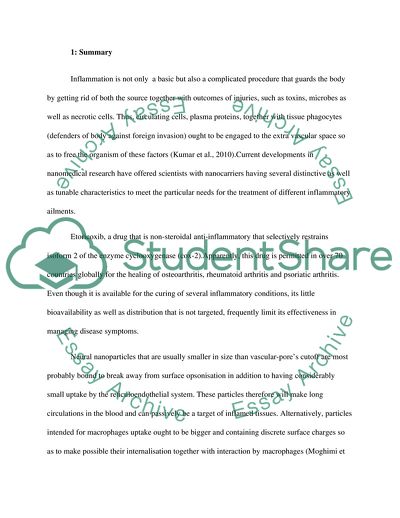Cite this document
(Effect of the Administration of Etoricoxib Using Nanotechnology for t Research Proposal, n.d.)
Effect of the Administration of Etoricoxib Using Nanotechnology for t Research Proposal. https://studentshare.org/biology/1837242-effect-of-the-administration-of-etoricoxib-using-nanotechnology-for-the-treatment-of-experimental-arthritis-in-a-rabbit-model
Effect of the Administration of Etoricoxib Using Nanotechnology for t Research Proposal. https://studentshare.org/biology/1837242-effect-of-the-administration-of-etoricoxib-using-nanotechnology-for-the-treatment-of-experimental-arthritis-in-a-rabbit-model
(Effect of the Administration of Etoricoxib Using Nanotechnology for T Research Proposal)
Effect of the Administration of Etoricoxib Using Nanotechnology for T Research Proposal. https://studentshare.org/biology/1837242-effect-of-the-administration-of-etoricoxib-using-nanotechnology-for-the-treatment-of-experimental-arthritis-in-a-rabbit-model.
Effect of the Administration of Etoricoxib Using Nanotechnology for T Research Proposal. https://studentshare.org/biology/1837242-effect-of-the-administration-of-etoricoxib-using-nanotechnology-for-the-treatment-of-experimental-arthritis-in-a-rabbit-model.
“Effect of the Administration of Etoricoxib Using Nanotechnology for T Research Proposal”. https://studentshare.org/biology/1837242-effect-of-the-administration-of-etoricoxib-using-nanotechnology-for-the-treatment-of-experimental-arthritis-in-a-rabbit-model.


